Festive flair: Roasted stuffed kalabasa
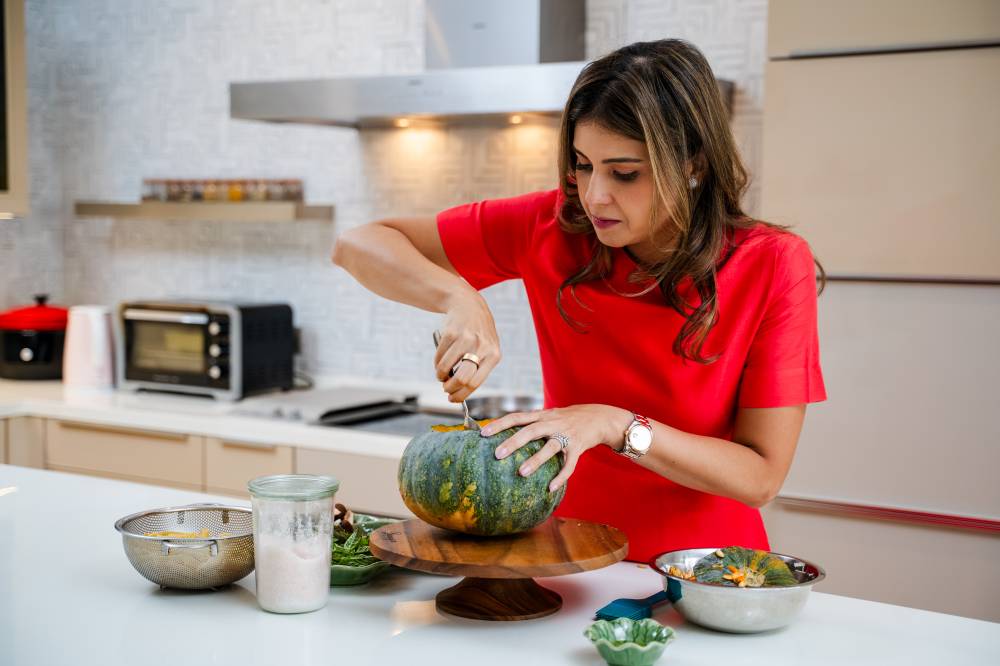
Technically a fruit but loved as a vegetable, squash (known to us as kalabasa) has been nourishing people for thousands of years. It originated in the Americas, where ancient civilizations cultivated it alongside corn and beans—the legendary “Three Sisters” of early agriculture. Today, squash is grown around the world, with countless varieties that differ in size, color, and texture.
In the Philippines, kalabasa is part of daily life. Its buttery flesh and mild sweetness make it perfect for classic dishes like ginataang kalabasa at sitaw (squash and string beans in coconut milk), pinakbet, or even crispy ukoy na kalabasa.
When the -ber months roll around, kalabasa, along with the pumpkins and other varieties, become abundant in the market—so much so that they are used as lanterns for Halloween. Another reason squash is around in the -ber months is to fight off the flu, which is also in season. Its yellow and orange colors signify the numerous antioxidants in it, while squash has naturally purifying qualities when eaten.
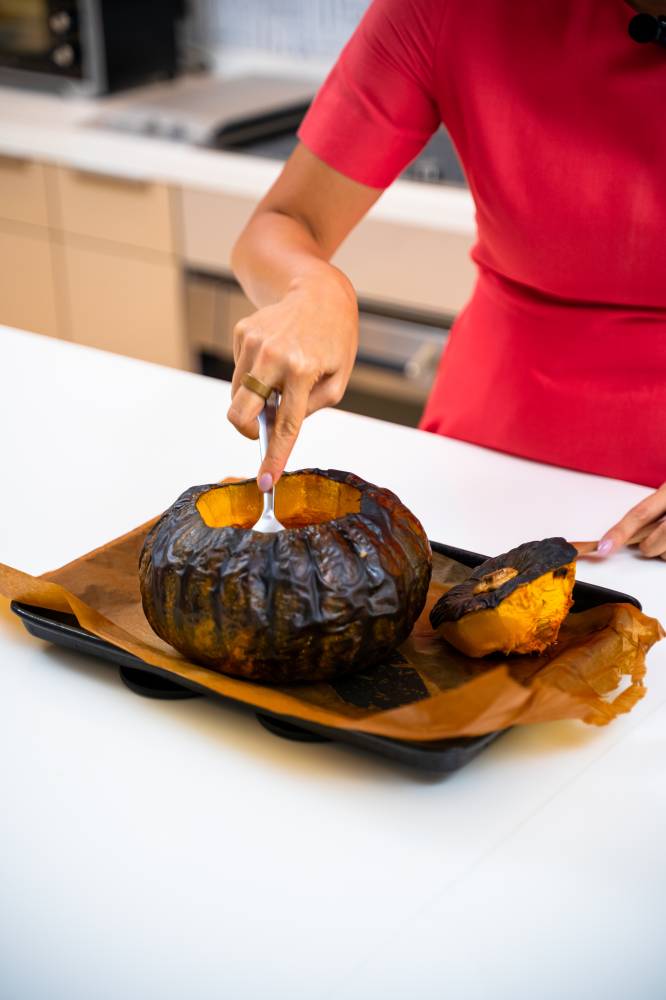
How kabocha squash came to the Philippines
The kabocha squash—often called Japanese pumpkin—has roots that stretch far beyond Japan. It originally came from Central and South America, where squash and pumpkins were first domesticated thousands of years ago. From there, Spanish and Portuguese traders carried these crops across the world during the Age of Exploration (1500s to 1600s).
One key route was the Manila-Acapulco Galleon Trade (1565 to 1815), which linked the Philippines and Mexico. This trade route became a global bridge for foods and plants: maize, tomatoes, cacao, chili peppers, and squash all traveled from the Americas to Asia through Manila. The early forms of kalabasa (squash) that took root in the Philippines came from this exchange, and Filipinos quickly adopted it into local cooking.

Meanwhile, Japan also received squash from Portuguese traders around the same period. The Portuguese brought the vegetable from Cambodia to Japan in the 16th century, and the Japanese called it kabocha—a shortened form of Cambodia abóbora, meaning “Cambodian pumpkin.” Over time, Japan developed its own sweeter, denser varieties through selective cultivation, giving rise to the modern kabocha we know today.
Centuries later, kabocha made its way back to Southeast Asia—including the Philippines—through Japanese migration, trade, and agricultural exchange in the early 20th century. During the pre-World War II years, Japanese settlers and traders in Davao and other parts of Mindanao introduced Japanese crops and cooking styles.
Among these were varieties of squash, melon, and root vegetables that differed slightly from local types.
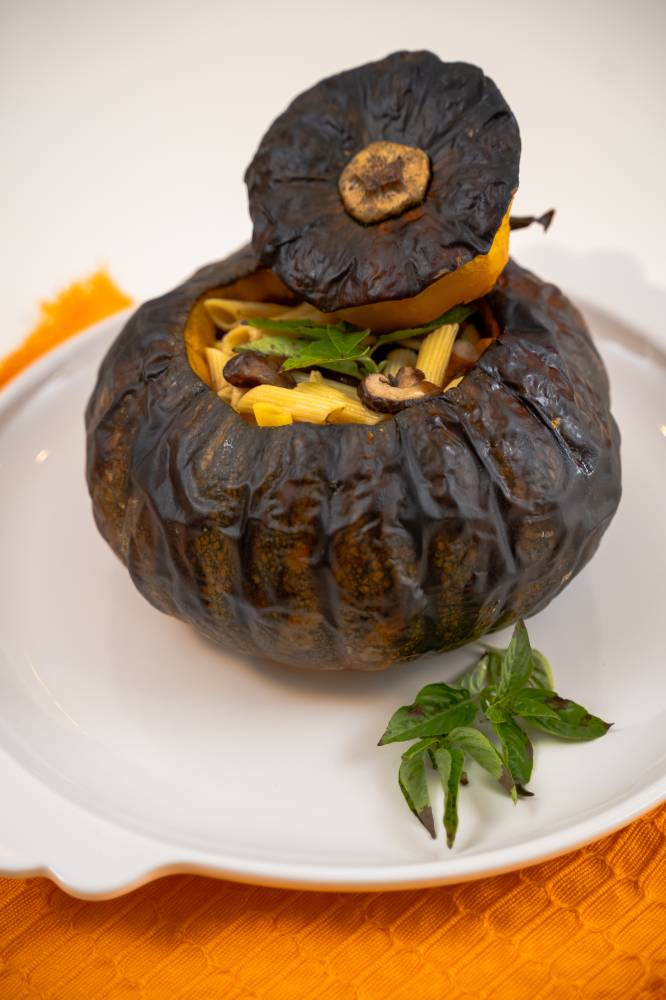
Kabocha squash versus the native kalabasa
Today, both kalabasa (the native squash descended from the early Mexican varieties) and kabocha (the Japanese cultivar) grow side by side in the Philippines. You can often find kabocha sold in local markets under names like “Japanese pumpkin” or “imported kalabasa.”
The two are closely related—both belong to the Cucurbita maxima species—but kabocha is smaller, darker green, and naturally sweeter, making it popular in both home and restaurant cooking.
Beyond its flavor and beauty, squash is also a sustainable crop. It grows easily in a variety of soils, requires minimal care, and produces a generous yield. Its thick skin helps it last for weeks without refrigeration, making it ideal for communities that depend on long-lasting food sources.
In the Philippines, squash has been a key ingredient in school feeding programs and nutrition campaigns, thanks to its affordability and versatility. Turning it into soups, fritters, or even pasta sauces ensures that children get vital nutrients in delicious ways.
By embracing squash, we celebrate a vegetable that’s not only good for the body but also for the planet.
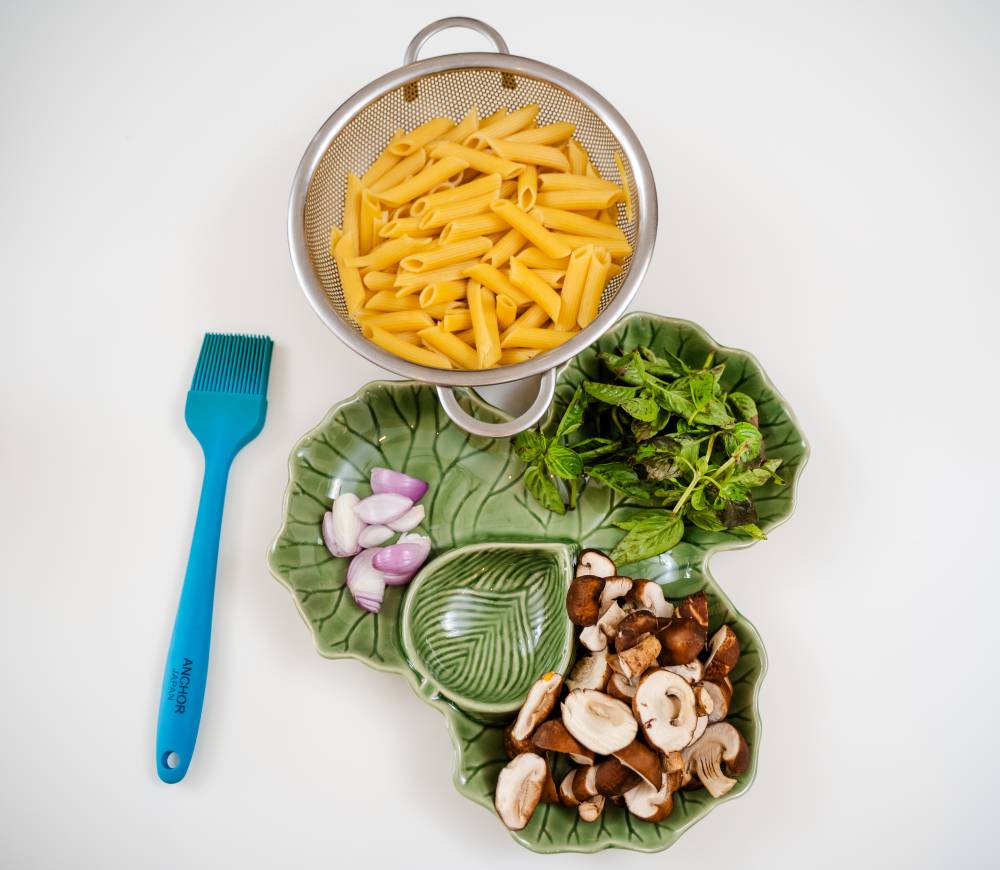
A household staple
As the year comes to a close and kitchens fill with the scent of cinnamon, garlic, and roasted squash, one thing becomes clear: This humble vegetable carries joy wherever it goes. It’s a symbol of abundance, comfort, and renewal—a reminder that nature’s gifts are often the simplest ones.
There’s something inherently festive about squash. Its warm color brightens up any dish, while its creamy texture adds comfort and depth. As the seasons change, squash often marks the shift from ordinary meals to something special—the kind you share with loved ones.
In Filipino households, kalabasa often graces the table during holidays and reunions. A pot of ginataang kalabasa bubbling on the stove evokes homecoming and nostalgia. Its sweetness pairs beautifully with coconut milk and shrimp, creating a dish that feels both celebratory and rooted in tradition.
My roasted kalabasa serves as a stunning centerpiece to any potluck, buffet, or festive dinner. Roasting the squash in its entirety and using it as a vessel that can also be eaten is a showstopper. While carving the top out initially takes some work, the rest of the process is easy to follow. Add garnish and serve it up as a magnificent celebratory dish.

Roasted stuffed squash pasta
Ingredients
2 Tbsp olive oil, divided
1 whole kalabasa
2 cups cooked pasta
1 cup mushrooms, sliced
1 whole red onion, diced
4 cloves garlic, minced
Handful of rosemary
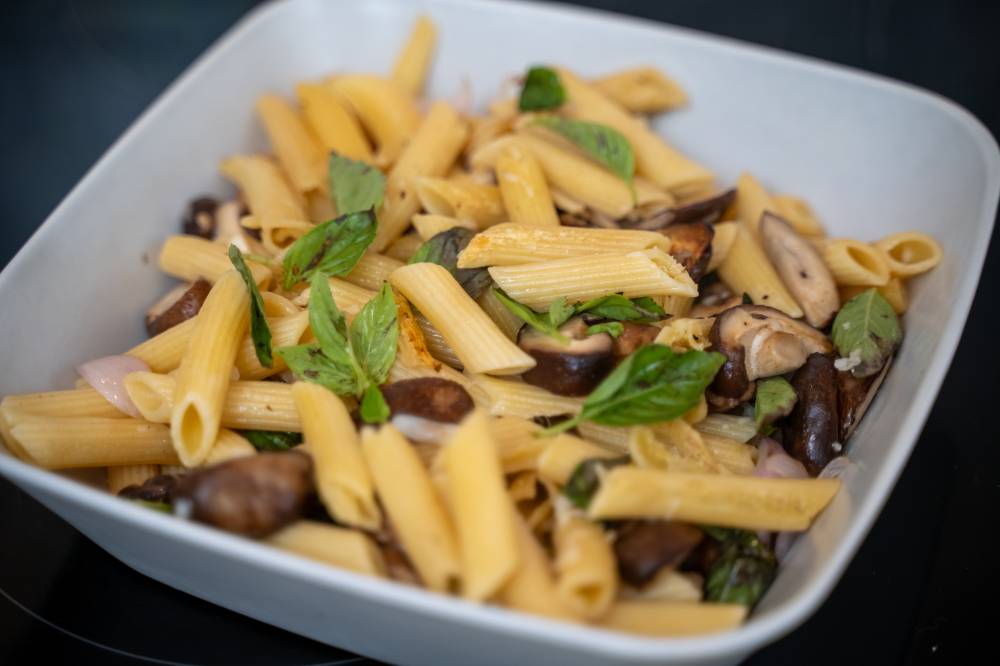
Procedure
1. Line a baking sheet with baking paper.
2. Cut out the top of the squash by inserting the knife 2 inches away from where the stalk is. Cut the top out.
3. Remove all the seeds from the inside with your hands or a spoon. Be careful not to damage the outside of the squash.
4. Use a basting brush to paint olive oil on the inside of the squash. Rub or baste salt on the inside.
5. Cover up the squash and place it on the baking sheet.
6. Bake at 450 degrees Fahrenheit for 30 minutes, or until the squash has softened. Remove from the oven.
7. Remove the top and carefully scrape down the sides, getting the squash out in threadlike sinews. Set aside.
8. In a pan, saute the remaining olive oil, mushrooms, and onions. Add the cooked pasta.
9. Add the garlic and rosemary, and add oil if needed. Season to your liking.
10. Once the pasta has been cooked, slowly add it to the baked squash, mixing the scraped-down squash.
11. Serve as a centerpiece, or cut the squash into a wedge and top with pasta. Enjoy!

















